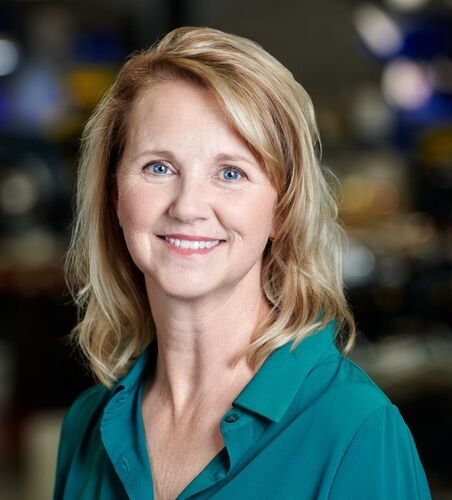
We collect basic website visitor information on this website and store it in cookies. We also utilize Google Analytics to track page view information to assist us in improving our website.

As renewable energy systems advance, they place new demands on internal components. Nowhere is that more evident than in magnetics. Transformers and inductors are expected to perform reliably across temperature extremes, switching harmonics, and tight packaging constraints.
Solar, wind, and energy storage applications introduce unique technical challenges where off-the-shelf components may not be the best choice for system designers.
Custom magnetics, designed specifically for these applications, can help address these challenges at the earliest stages of system design. By considering unique environmental factors, high-frequency switching, thermal cycling, and system integration requirements, custom solutions can minimize the risks associated with reliability and performance.
This post explores the unique challenges magnetics face with respect to solar, wind, and battery systems—and how custom component design supports long-term reliability and system success.
Modern solar inverters are among the most demanding environments for magnetics. Central inverters at utility scale operate at high power levels with aggressive efficiency targets. String inverters and module-level devices often experience rapid changes in operating conditions, especially with passing clouds or fluctuating demand.
Switching frequencies above 50 kHz are common, introducing thermal stress and requiring magnetic cores that can operate efficiently at elevated temperatures. Standard potting compounds and windings may not hold up under these conditions, leading to premature failure.
Grid-connected solar systems must follow strict rules for harmonic distortion (THD). However, high-frequency switching tends to generate harmonics that need to be suppressed before they reach utility infrastructure. Standard magnetics may struggle to attenuate these signals effectively.
Custom magnetics can be tailored for:
Reduced core losses at high frequencies
Improved isolation distances to minimize EMI coupling
Winding techniques that balance capacitance and inductance
String inverters and rooftop-mounted devices are typically housed in compact enclosures. Limited airflow and outdoor exposure increase the risk of thermal buildup and moisture ingress. Off-the-shelf parts, often designed for controlled indoor use, may degrade quickly in such environments.
Custom solutions can:
Include encapsulation for humidity resistance
Utilize thermally stable winding materials
Be shaped for non-traditional footprints (e.g., vertical mount designs)
Wind turbines, particularly offshore and high-capacity units, present unique magnetic challenges. Generator systems can produce rapid current fluctuations, especially during startup or changes in wind speed. Inductors and transformers must be able to manage high inrush currents without saturating.
Where off-the-shelf inductors might saturate under these loads, custom components can be designed with:
Controlled saturation profiles
Distributed air gaps for smoother magnetic response
Core materials selected for high permeability and low loss
Wind turbines put magnetics in tough conditions. Their nacelles are high off the ground and constantly vibrating. Standard inductors may fail due to mechanical fatigue or resin cracking.
Custom magnetics for wind applications often include:
Reinforced bobbins and windings
Vacuum encapsulation for vibration dampening
Mechanical mounting features integrated into the component design
Variable-speed wind turbines often inject harmonics into the local grid, affecting other systems nearby. Custom filter inductors can be tuned to specific harmonic ranges to reduce these effects before they propagate.
Battery energy storage systems (BESS) require magnetics that can handle power flow in both directions—charging and discharging. This introduces different waveform shapes and current intensities, which many single-direction magnetics are not optimized for.
Custom transformers and inductors in this space are built to:
Maintain consistent inductance across polarity changes
Handle transient loads without distortion
Provide isolation under both charge and discharge conditions
Energy storage systems are often housed in sealed containers with limited airflow. Passive thermal management becomes essential. Custom magnetics help by minimizing internal heat generation through efficient core materials and winding layouts.
Strategies include:
Using core materials with low hysteresis and eddy current losses
Selecting winding techniques that reduce hot spots
Designing for natural convection pathways within the enclosure
Battery systems must maintain galvanic isolation, even during fault conditions. This requires insulation systems that hold up during thermal events or voltage surges. Custom magnetics can incorporate high-grade insulation and layout spacing that meet specific isolation standards.
Custom doesn’t just mean different. It means built with purpose. The value lies in:
Predictable thermal behaviour: Helps avoid derating and ensures consistent performance across temperature swings.
Consistent impedance and response: Reduces distortion and improves controller feedback accuracy.
Optimized footprint: Makes the most of limited enclosure space.
Environmental resilience: Withstands vibration, moisture, and thermal shock better than general-purpose parts.
These advantages often lead to:
Fewer field failures
Lower maintenance intervention
More consistent performance over product lifetime
While custom magnetics may involve longer lead times and validation steps, they mitigate the much higher cost of failure in mission-critical renewable applications.
Understanding the true impact of magnetic component failure helps justify the investment in custom solutions. Industry reports indicate that offshore wind component failures can result in multi-million-dollar replacement costs, particularly when specialized vessels and equipment are required.
According to a T&D World analysis on transformer resiliency, "the largest transformer loss on record occurred at a power plant, resulting in business interruption costs of more than $86 million" as reported by Willis Risk Solutions. The article emphasizes how transformers face electrical, thermal, and chemical stresses that can degrade insulating oils and lead to premature failure, highlighting why custom designs with enhanced durability are critical for renewable energy applications.
For solar installations, inverter-related failures average tens of thousands of dollars in physical damage alone, with business interruption costs often doubling that figure due to extended repair times. Research indicates that offshore wind turbines experience multiple failures annually, with major component replacements running into significant costs even before considering downtime.
Consider these hidden costs:
Emergency service calls to remote installations
System downtime during peak production periods
Warranty claims and customer satisfaction issues
Regulatory penalties for grid non-compliance
Reputation damage in competitive markets
Custom magnetics represent a strategic investment that prevents these cascading failures. While custom components cost more initially than standard catalogue parts, the investment becomes justifiable when compared to the potential failure costs and risk mitigation achieved.
Working with an experienced custom magnetics partner means identifying risks early. During the design phase, key considerations include:
Voltage and current range across all operating conditions
Target switching frequency and any harmonic constraints
Ambient and internal temperature profiles
Mechanical stress and vibration profiles
Size and shape constraints from system layout
Early prototyping and testing ensure that magnetics behave as expected under real-world conditions. Testing can include:
Partial discharge detection
Thermal imaging under load
Dielectric strength testing
Accelerated thermal cycling

Renewable energy systems demand high repeatability. Custom magnetics often require:
Precision winding (foil, toroid, rectangular)
Automated electrical testing (e.g., Voltech systems)
Vacuum encapsulation for environmental sealing
Ferrite core grinding for inductance tuning
Quality-focused manufacturers also offer:
Documentation for traceability
Lot-specific test reports
This level of control cuts down variation between batches. That’s key when you need identical performance in every unit.
A few key trends are shaping the future of magnetics in renewable energy:
Wide-bandgap semiconductors (SiC, GaN): Require magnetics that operate efficiently at MHz-level frequencies.
Digital monitoring integration: Sensors embedded into magnetics for predictive maintenance.
Modular magnetics designs: Enabling easier servicing and replacement.
Sustainable materials: Including recyclable cores and low-impact potting compounds.
Engineers are increasingly looking at magnetics not as standalone components but as part of an optimized power system. That system-level thinking drives more demand for custom designs.
Custom magnetics are not just about fit and form—they’re about risk management. In renewable energy systems where uptime, safety, and performance are all critical, the cost of guessing wrong is too high.
Working with experienced engineers from the outset allows teams to identify failure modes early, test more effectively, and build in confidence from the ground up. From the heat of a rooftop inverter to the vibration of a nacelle, well-designed magnetics can make the difference between a product that performs—and one that fails prematurely.
The challenges are real, but so are the solutions. And in a space where every watt counts, solving them starts at the core.
When renewable energy systems face unexpected failures or standard magnetic components limit design flexibility, the root cause often traces back to components that weren't built for these demanding applications. Electronic Craftsmen specializes in solving exactly these challenges.
Our engineering team has developed over 10,000 custom magnetic solutions across six decades. From high-frequency transformers that thrive in desert heat to inductors that withstand offshore vibration, we've tackled the toughest renewable energy applications.
Don't let magnetic component limitations hold back your renewable energy innovations. Schedule a consultation with our engineering team to discuss your specific challenges. We'll analyze your requirements, share insights from similar projects, and develop a custom solution that ensures long-term reliability.

